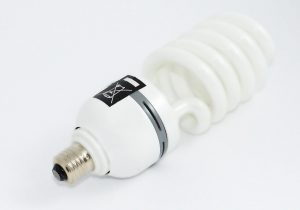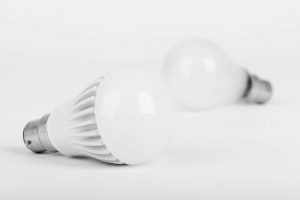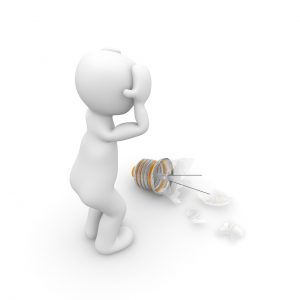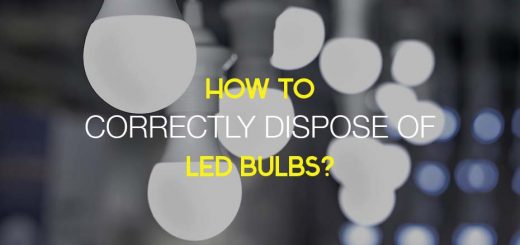How to properly clean different light bulbs?
Feel a need to buy an extra set of candles, because your light fixtures don’t provide you with enough illumination? Cleaning your lighting could be the answer, because light bulbs need a good scrubbing once in a while too, for them to be able to give out light to best of their abilities and not turn your once-perfectly-lit room into a cave-like space. Which is why this article will provide your with a handy guide of how to clean different light bulbs, where we will be going over all different types of bulbs, cleaning solutions for bulbs and tips and tricks on how to properly scour your light bulbs, so you know, that exactly to do when it comes time to do spring cleaning of your bulbs.
Before you clean
Electricity is a truly magnificent invention, but never underestimate its potential deadly power. There are some basic precautions that you need to take before cleaning light bulbs, lighting fixtures and other light related components. Otherwise, you are setting yourself up for a likely accident involving electric current.  And electricity isn’t the only thing you should be worried about. Since lamps are often located in hard to reach places, people start to use random objects to reach them, which usually results in countless mishaps, bringing a lot of people to the emergency room for treatment after getting injured.
And electricity isn’t the only thing you should be worried about. Since lamps are often located in hard to reach places, people start to use random objects to reach them, which usually results in countless mishaps, bringing a lot of people to the emergency room for treatment after getting injured.
Of course, we don’t want to scare you into thinking that the whole ordeal is a bad idea. It’s more about paying close attention to the safety measures before starting the work on your light bulbs. First of all, do have a plan of how you will reach the bulbs safely by thinking about different solutions beforehand. If it’s a ceiling lamp, you are bound to require a ladder, a stool or just a helping hand as it might be too dangerous for you to reach for the lamps on your own. Then after you have a foolproof plan of how you will get to your bulbs, you can shut off the electricity and start cleaning. Note that just turning off your light by using the light switch might fully switch off the lamp, which automatically poses an additional health hazard, as well as be aware that the light can be still hot, especially if you just recently turned off the lamp.
Cleaning
Did you get the light bulb? Great! Now, it’s time to clean and this means a whole variety of different approaches and practices. Just as a disclaimer, there isn’t one best way to clean your bulbs, it really is down to your personal preference, so feel free to read through my suggestions of how you can clean your bulbs and afterwards make your own choices.
 Dusting is probably the most popular ways to clean light bulbs. You can use a feather duster as it’s gentle on the bulb and will minimize the chances of microscopic abrasions. Just don’t apply too much pressure to the bulbs, because this can damage the luminary.
Dusting is probably the most popular ways to clean light bulbs. You can use a feather duster as it’s gentle on the bulb and will minimize the chances of microscopic abrasions. Just don’t apply too much pressure to the bulbs, because this can damage the luminary.
Other people resort to using a damp towel or cloth to clean their light bulbs, but there’s a definite risk by doing it that way. There is a possibility of getting water on the electric socket of the lamp and compromising it. Which is why experts recommend letting the cleaned bulbs dry off for at least 15-20 minutes, before you screw them back into your light fixture to completely ensure a safe re-installing. For bigger bulbs, you might want to go for 20-30 minutes just to be sure.
As the ecological and natural products are on the rise, more and more people are also using essential oils to cleanse everything from dishes and boots to glass tables and even light bulbs. Yes, it’s completely true that essential oils can be safely used on certain light bulbs, mostly energy efficient LED bulbs, because these bulbs don’t get too hot and therefore can be cleaned using mint or thyme oil wash. Just drizzle 2 to 3 drops of the essential oil on a cloth and rub your bulb clean. Your bulb will be like new and will have a pleasant smell as well.
Additionally, you should also clean the light fixtures themselves to ensure a complete revival of your home lighting, since the fixture in which your bulbs sit are also part of your light system and since some research even shows that cleaning all parts of your lamp will result in 50 percent increase in light brightness. Glass lamp covers are the worst because they are like magnets to dust and other household debris. Recessed lighting or fabric lamp shades are a bit easier to clean, but you should be very careful making sure that you get the inside of the fixtures all dried up after wiping it clean with a damp microfiber cloth, so there is no chance in unpleasant accidents.
The big No-No’s of bulb cleaning
Leave the kitchen, toilet and garden sprays alone. Spraying light bulbs with artificial sprays to clean them isn’t the best idea as we have already mentioned that the moisture might penetrate the electrical system of the light and damage it.
Also be be especially careful when handling and cleaning CFL (compact fluorescent), HID (high-intensity discharge), neon and MSA (mercury short-arc) bulbs. If you break one of these bulbs, you’ll release toxic substances, which are not only harmful for the environment, but also for your health. Which is why don’t even think about using a vacuum cleaner or other mechanical cleaning appliances to clean your light bulbs, because that is one of the easiest ways to break the delicate bulbs.
But should a light bulb still break, absolutely under no circumstances don’t inhale the dust and gas that comes out of the bulb. Open all your windows to vent out the room, and after that is done use a broom to gather all the broken bulb pieces together. Don’t use your hands as there might be really small pieces of glass or other material that can easily cut through the skin. Then place the broken peaces in separate plastic bag and dispose them.
After cleaning
Have you cleaned the light bulbs thoroughly? Now it’s time to put the light bulbs back in place. Check that you have inserted them correctly, and then turn on the power. We also recommend to turn your back to the light or cover your eyes while turning on the light switch, because there have been instances when low-quality bulbs burn out or even burst into a million tiny pieces right after switching on the lights. And you have yourself clean, bright and efficient lighting once again.



